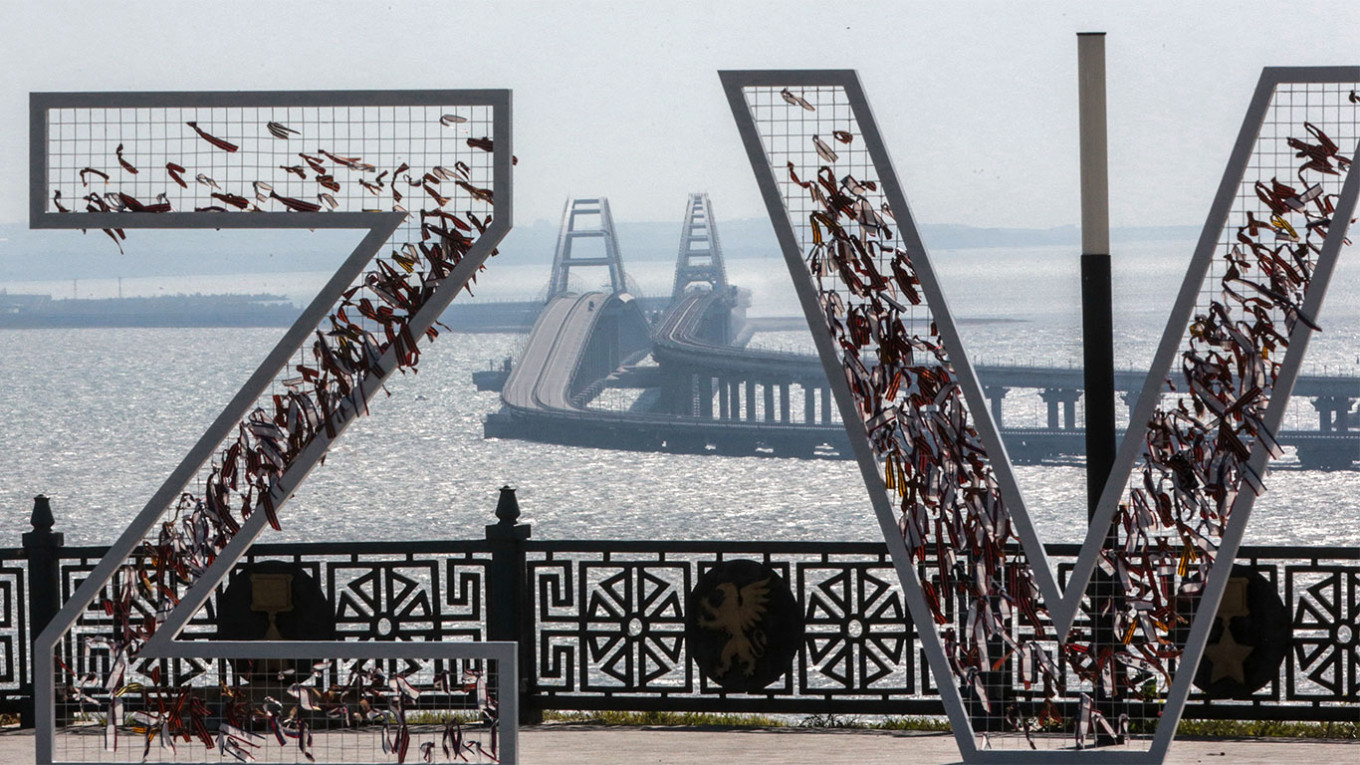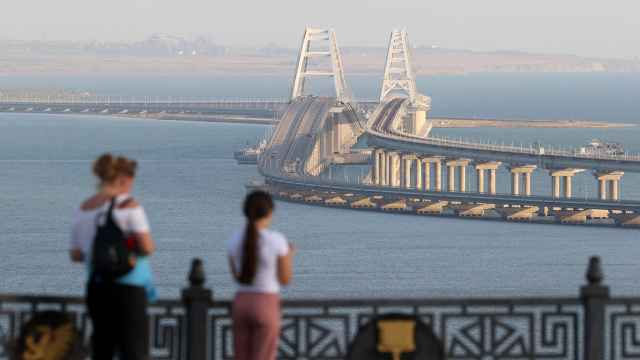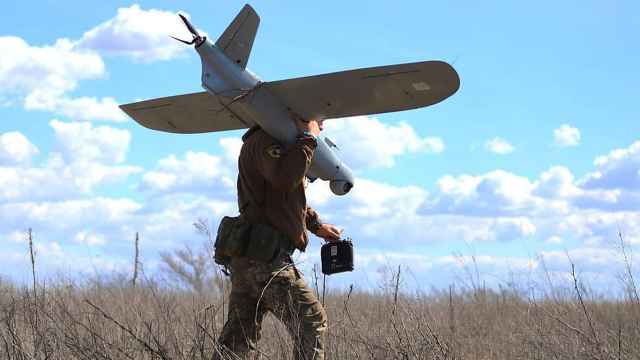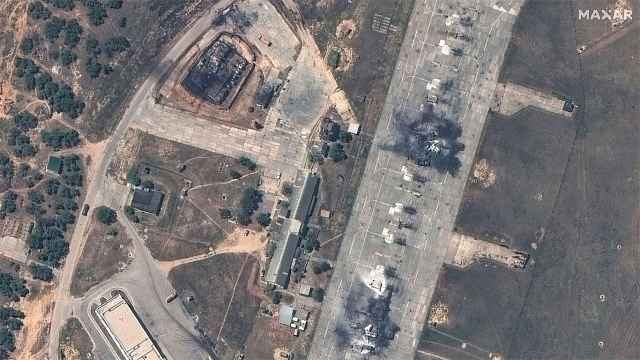The Crimean bridge is a symbol of Putin's Russia: imperialism, corruption, propaganda and its effect on the people, as well as the West’s ineffective sanctions. On Saturday, this 300-billion-ruble symbol ($4.8 billion) went up in flames.
The Crimean bridge — first called the Kerch bridge — was supposed to make the "island of Crimea" into a model region of Russia, a place to which all roads and money led. This wasn’t particularly logical; not every Russian region has something like this, and — in fact — five regions don’t even have railroads. But it would be a good showcase. The Crimean bridge became a symbol of permanent — not temporary — occupation, visible confirmation of the annexation of new territories and the embodiment of imperial ambition.
I know all about the building of the Kerch bridge because I wrote about government contracts for Vedomosti newspaper — and the bridge was one of the largest state contracts at that time. I saw how the contract price changed (not always going up, by the way), how the subsidiary contractors were selected, and how payments to construction workers were sometimes delayed.
This bridge might have been a preparation for war, or it might have been the result of political short-sightedness. It is also a perfect illustration of the kind of massive projects that the Russian government loves so much. The whole country enjoys working for some big, expensive, national goal and preferably gets something to remember: the 2014 Olympics in Sochi, the 2018 FIFA World Cup finals and so on. It’s like a new version of the old five-year plans, but with an emotional charge: everyone is so busy working they have no time to think about declines in real incomes and living standards.
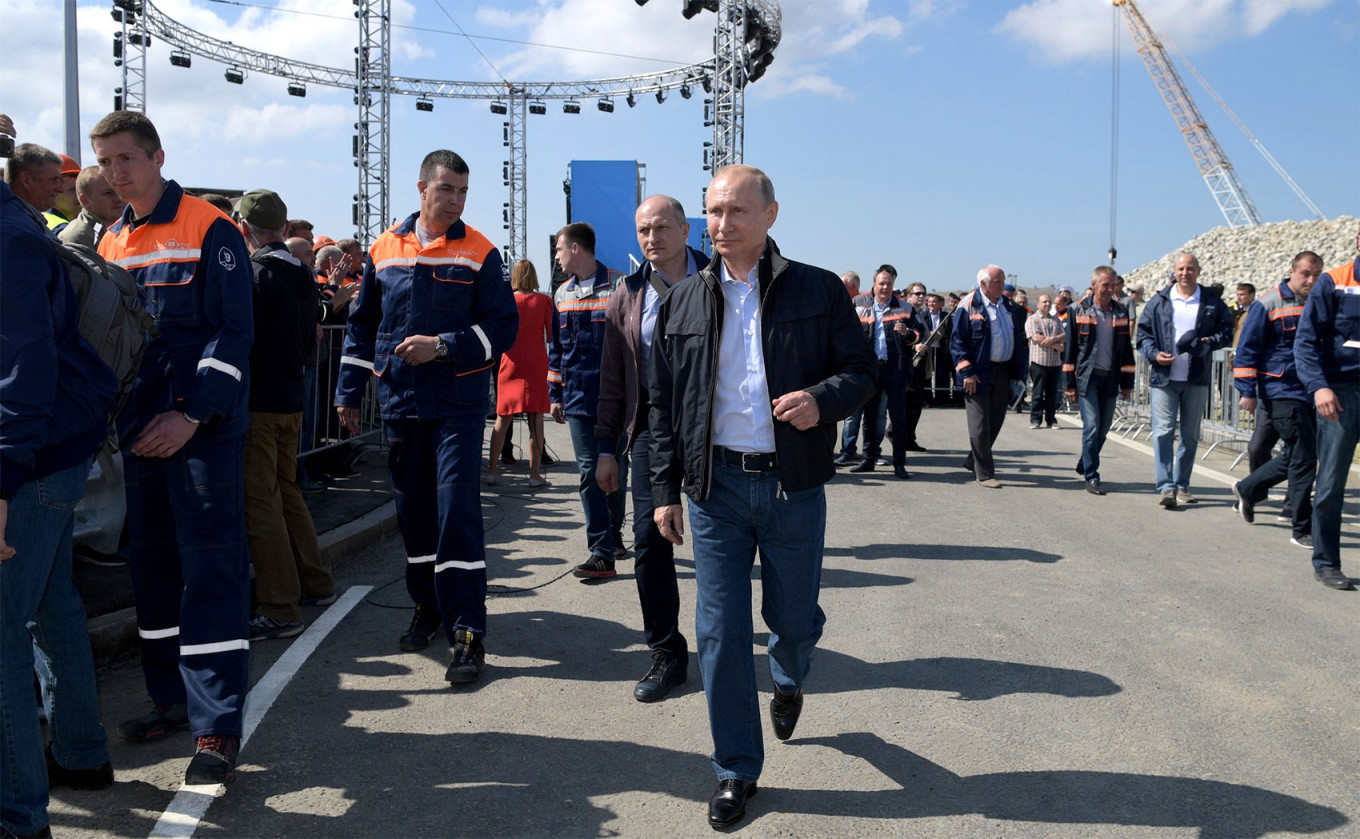
The bridge was finished ahead of schedule. Construction began in 2015 and opened in 2018 for cars and in 2019 for trains. In other words, the bridge has been in use one year longer than it was under construction. In this sense, the project was a success.
At the same time, the bridge became a symbol of corruption. In total, the whole project cost more than 300 billion rubles ($4.8 billion) for 19 kilometers of bridge and another 60 kilometers of coastal road. This wasn’t excessively expensive. At the time of construction, one kilometer of road cost about 1 billion rubles. The Third Ring around Moscow cost 341.2 billion rubles ($5.5 billion) for 337 kilometers. So, it wasn’t even the most expensive large-scale project.
Almost all the money allocated for the bridge passed through Putin's friend, Arkady Rotenberg (about $4 billion). It is telling that his company Stroygazmontazh got the order for construction without competition — the government essentially appointed the company. Money was sent in advance, then the company built, reported back to the government, and got the next tranche. Stroygazmontazh was awarded a contract to build the railroad line to Crimea ($325 million) in exactly the same way — without a tender. Payments were made through Mosoblbank, which was restructured by Arkady and Boris Rotenberg's SMP Bank.
Alexei Navalny's Anti-Corruption Foundation accused the creators of the movie “Crimean Bridge” — RT editor-in-chief Margarita Simonyan and her husband Tigran Keosayan — of stealing 30% of the film’s budget.
The bridge also showed that Western sanctions imposed after the annexation of Crimea in 2014 were a mere formality. Most of the companies working on the project were under sanctions. But this did little to hinder design, construction or financing. Individual suppliers raised questions, but on the whole, anyone who wanted to circumvent the sanctions did so.
The bridge was an excellent demonstration of how willing Russians were to develop the newly annexed territory. The megastructure was admired even by those skeptical of the regime. It was, after all, the longest bridge built in Russia (19 kilometers). In 2018, 6.8 million tourists came to Crimea, or 28% more than in 2017 (5.4 million), of whom half came via the Crimean bridge. They continued to come despite the pandemic. In 2021, a new record was set at 9.5 million tourists. Despite the war, even in 2022 more than 5 million people vacationed in Crimea. So, the bridge is also a symbol of the apolitical nature of Russians.
In general, bridges are symbols of unity. For example, on euro banknotes, bridges and arches symbolize a united Europe. But this bridge cut Russia off from the world community. The UN General Assembly condemned the construction and operation of the bridge as contributing to the militarization of Crimea. Ukraine, the European Union and the U.S. condemned it.
Now, the bridge has been damaged. This is also symbolic. The damage might, perhaps, symbolize a turning point in the war.
A Message from The Moscow Times:
Dear readers,
We are facing unprecedented challenges. Russia's Prosecutor General's Office has designated The Moscow Times as an "undesirable" organization, criminalizing our work and putting our staff at risk of prosecution. This follows our earlier unjust labeling as a "foreign agent."
These actions are direct attempts to silence independent journalism in Russia. The authorities claim our work "discredits the decisions of the Russian leadership." We see things differently: we strive to provide accurate, unbiased reporting on Russia.
We, the journalists of The Moscow Times, refuse to be silenced. But to continue our work, we need your help.
Your support, no matter how small, makes a world of difference. If you can, please support us monthly starting from just $2. It's quick to set up, and every contribution makes a significant impact.
By supporting The Moscow Times, you're defending open, independent journalism in the face of repression. Thank you for standing with us.
Remind me later.



